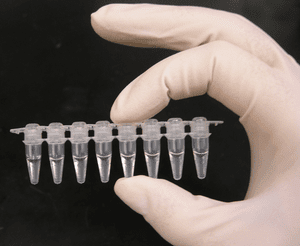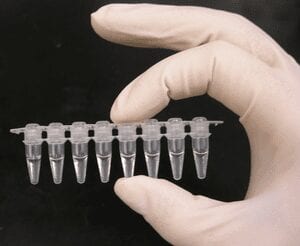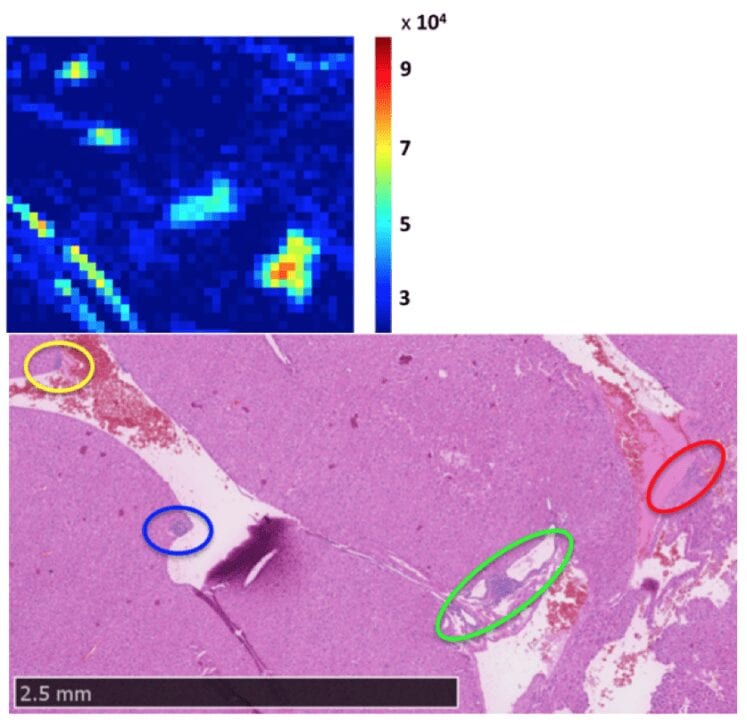
A sensor developed at A*STAR can detect bladder cancer cells and track tumor progression
Microelectronic engineers in Singapore have developed and tested sensor technology that can detect and measure a chemical signature of bladder cancer. The light-based sensor could eventually be used for the early diagnosis and subsequent tracking of the progression and treatment of many different tumors, according to Yong Shin at the A*STAR Institute of Microelectronics, who led the research. After further testing of the technology, Shin and co-workers are planning to develop a lab-on-a-chip device incorporating the sensor that can process fluid samples within about five minutes.
Genes that suppress tumors can be deactivated by the attachment of a methyl group to a specific DNA sequence — cytosine next to guanine — in their promoter region. The methyl group prevents the gene from being used as a template for protein synthesis and reduces the capacity of the cell to control its own proliferation.
Several well-established chemical methods exist for detecting such DNA methylation, but they are expensive, time-consuming and dependent on laboratory expertise. Shin and co-workers therefore investigated direct physical methods as an alternative. They focused particularly on silicon micro-ring resonators that amplify light at specific resonant frequencies. The resonators developed by the researchers are very sensitive detectors of a shift in light frequency, including the shift that occurs when a methyl group is attached or detached to DNA.
Shin and co-workers tested the capacity of silicon micro-ring resonators to discriminate between methylated and unmethylated forms of genes known to trigger cancer in bladder cells. They fashioned separate DNA probes to capture one or other form when they passed a solution of the genes, amplified by the polymerase chain reaction, over a silicon chip to which the probes were attached. The resonators clearly distinguished between the forms within five minutes. Moreover, the method allowed the team to quantify the density of methylation, which means the technique should be able to track changes in patterns of methylation.
“Our sensors could be widely useful for DNA methylation detection specifically and rapidly in the field,” says Shin.
The Latest Bing News on:
Cancer detection
- King Charles III returns to public duties with visit to cancer treatment charityon April 30, 2024 at 12:48 pm
King Charles III kicked off his return to public duty with a visit to a cancer treatment charity, where he discussed with patients the “shock” he felt upon learning of his cancer ...
- King Charles shares 'shock' of cancer diagnosis with patientson April 30, 2024 at 12:38 pm
King Charles spoke to patients about the "shock" of hearing a cancer diagnosis - as he returned to public engagements with a hospital visit. The King was asked by a patient how he was feeling while he ...
- King Charles Steps Out For First Public Engagement Following Cancer Diagnosison April 30, 2024 at 9:56 am
LONDON (AP) — King Charles III returned to public duties on Tuesday, visiting a cancer treatment charity and beginning his carefully managed comeback after the monarch’s own cancer diagnosis sidelined ...
- King Charles returns to public duties after cancer diagnosison April 30, 2024 at 7:44 am
King Charles returned to public duties for the first time in three months since announcing his cancer diagnosis by visiting a cancer treatment charity. NBC News’ royal commentator Daisy McAndrew talks ...
- King Charles is back at work after cancer diagnosis. He looks good.on April 30, 2024 at 6:01 am
Charles is the monarch, but he has entered another realm and is now a cancer patient as well. This has unnerved the nation, who welcome photos of him out and about in public.
- King Charles visits cancer center as monarch returns to public duties following diagnosison April 30, 2024 at 5:53 am
King Charles III was diagnosed with a form of cancer and is undergoing treatment, Buckingham Palace announced in February. The monarch suspended public engagements.
- King Charles Appears in First Public Engagement Since Cancer Diagnosison April 30, 2024 at 5:19 am
King Charles III appeared in his first public engagement following the news of his cancer diagnosis at a hospital and cancer center in London on April 30.
- King Charles Returns to Royal Duties in First Official Engagement Since Cancer Diagnosison April 30, 2024 at 5:04 am
Queen Camilla joined him for his visit to a London hospital's cancer unit. King Charles is back. On April 30, the monarch made his return to royal duties with his first official engagement since ...
- King Charles smiles in first public visit since his cancer diagnosison April 30, 2024 at 4:47 am
King Charles has returned to official public duties for the first time since being diagnosed with cancer. AFP via Getty Images The pair’s visit aims to draw the importance of early diagnosis and ...
- King Charles visits cancer center in 1st return to public duties since cancer diagnosison April 30, 2024 at 4:35 am
King Charles III visited a cancer treatment center in the United Kingdom Tuesday, marking his first public royal engagement since his own cancer diagnosis was announced in February. Charles, 75, was ...
The Latest Google Headlines on:
Cancer detection
[google_news title=”” keyword=”cancer detection” num_posts=”10″ blurb_length=”0″ show_thumb=”left”]
The Latest Bing News on:
Light-based sensor
- OMNIVISION Launches New 9-megapixel Global Shutter Image Sensor for Industrial Machine Vision Camerason April 30, 2024 at 6:29 am
GS sensor with a 1-inch optical format. The sensor's 3.45 µm pixel is based on OMNIVISION's patented PureCel®Plus-S stacked-die architecture for best-in-class image sensor performance. The OG09A ...
- Traffic Sensor Market Poised for Robust Growth, Anticipated to Reach US$ 1439.0 Million by 2032on April 29, 2024 at 7:43 am
Traffic Sensor Market is expected to be valued at US$ 1,439.0 Million by 2032 & will steadily rise at a CAGR of 8.4% in the time period of 2032, a report by FMI ...
- Could Canon's new sensor design make the tilt-shift lens obsolete?on April 29, 2024 at 7:32 am
Canon designs a lot of non-consumer cameras including cameras for security, industrial applications, and medical use, so there is every chance that this patent will never see the light of day in an ...
- Unlocking New Potentials: Halting Light in Photonic Crystals Offers Photonic Device Innovationon April 29, 2024 at 12:03 am
Advanced technologies in photonic devices such as LED displays, fiber-optics, sensors, and lasers could see a significant leap forward thanks to innovative ways of manipulating light, including ...
- Wearable Sensors Market Outlook, Size, Prominent Players, Share, Revenue, and Forecast 2024 to 2032on April 28, 2024 at 3:09 pm
Report Ocean has recently unveiled its research findings on the “Wearable Sensors Market” spanning from 2024 to 2032. This comprehensive report thoroughly analyzes the market dynamics, including ...
- A laser-based air quality monitor on every lamp post?on April 25, 2024 at 2:41 am
An EU-funded project called PASSEPARTOUT is developing a new gas-sensing network that can analyse multiple gasses in real-time. The system is sufficiently compact (‘hand sized’) and affordable (sub ...
- Researchers pioneer sensor multiplexing for real-time decoding of different plant stresseson April 23, 2024 at 6:25 am
Science X is a network of high quality websites with most complete and comprehensive daily coverage of the full sweep of science, technology, and medicine news ...
- ForeFlight Crowdsources AHRS-based Turbulence Reportson April 22, 2024 at 9:00 am
The reports, generated from the Sentry data, show varying levels of intensity from smooth to severe at altitudes flown by aircraft carrying the Sentry devices.
- Study: Far-UVC light eliminates airborne virus in an occupied roomon April 22, 2024 at 3:02 am
Unlike conventional germicidal UVC light — which kills viruses and bacteria but can only typically be used in unoccupied rooms because direct exposure to it can potentially harm skin and eyes — ...
- Sensors that detect plant stress could revolutionize farmingon April 20, 2024 at 6:00 am
The team is working on integrating the plant sensors into diagnostic systems that could not only detect stress but also initiate responses.
The Latest Google Headlines on:
Light-based sensor
[google_news title=”” keyword=”light-based sensor” num_posts=”10″ blurb_length=”0″ show_thumb=”left”]











